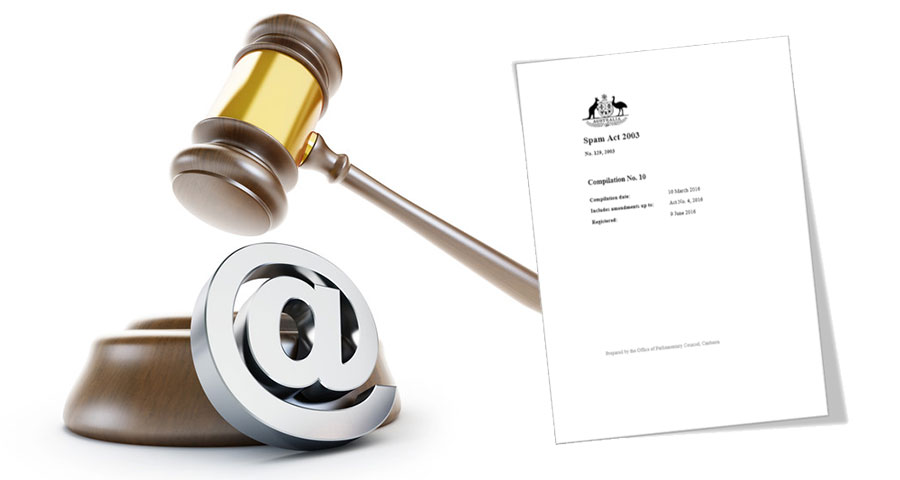Why Publishers need to know section 17 of the Spam Act
Upside.Digital have been working with the ACMA recently on educating both publishers and advertisers on what we see are key areas which publishers and advertisers do not have a clear understanding, and to set some guidelines around these sections.
It should be noted that these guidelines refer to “solus emails” being sent by publishers on behalf of advertisers promoting their product or service. If you are sending any other commercial emails and are unclear how the sections within the Spam Act apply to you, you should seek legal advice.
If you polled Australian publishers and email marketers, their confidence level would most probably be high in their understanding of the Spam Act 2003. If you instead ask them if they’ve actually read the act and if they can list what’s included, many would instead start to feel very uncomfortable. The Spam Act 2003 is a lengthy document with sometimes wide and vague formulations, and not many real life examples are provided. The ACMA’s Spam Act 2003 FAQ Page gives more input on best practices and how to actually implement what’s in the act, but it’s a time consuming practice to read through all available articles to get a full understanding.
There are three key elements to the Spam Act 2003 which are:
Section 17 of the Spam Act 2003 – Identity – Key requirements for publishers
There are a set of key considerations that needs to be taken into account for publishers to comply to section 17 of the Spam Act. The publisher needs to make sure that the message provided by an advertiser contain accurate contact information, and clearly identifies the authoriser of the mail (the advertiser), as explained more in Why Advertisers need to know section 17 of the Spam Act. In addition to this, the publisher needs to provide the same contact details of themselves, to clearly identify the sender of the mail. Below we have made an illustration what every email need to contain, if it’s a third part publisher that sends an email on an advertiser’s behalf.
Header: Publisher
This is the section where the sender (‘publisher’) identifies itself with a logo or company/website name. If the Logo does not clearly identify the publishers website name that the user signed up to, you must state the company/website name. It is also recommended for the best user experience to also include an explanation of why the recipient have received the message, and a web link where the email can be viewed in a web browser. Furthermore, it’s also best practice to inform the recipient that the content contains promotional material, and that it is supplied by an advertiser.
Header: Advertiser
This section identifies the Advertiser with a logo or company name if the Logo does not clearly and accurately identify the “authoriser” of the message which in the case of solus email is the advertiser of the product or service being featured within the email.
Content: Advertiser
This is the section where the advertiser places their content promoting their product or service
Footer: Advertiser
The Advertiser footer should contain clear and accurate contact details that identify who the advertiser is. The information needs to be accurate and up to date, and it should have contact details enabling the recipient to contact the advertiser. Go in to further details here like you do on the advertiser side
Footer: Publisher
The Publisher footer should contain clear and accurate contact details that identify who the publisher (sender) is. The information needs to be accurate and up to date, and it should have contact details enabling the recipient to contact the publisher.
Have a look at your last email send, and make sure you comply to all parts of this mockup.
References and useful links:
The Spam Act 2003: http://www.austlii.edu.au/au/legis/cth/consol_act/sa200366
Third-party emails: http://www.acma.gov.au/theACMA/spam-third-party-sending-your-emails
Sender identification: http://www.acma.gov.au/Industry/Marketers/Anti-Spam/Ensuring-you-dont-spam/sender-identification-ensuring-you-dont-spam-i-acma
Sender identification—does your audience know who you are?: http://www.acma.gov.au/theACMA/engage-blogs/engage-blogs/Emarketing/Sender-identification-does-your-audience-know-who-you-are
Related posts
What does a 2015 e-commerce strategy look like for brands? Well according the Melbourne Online Retailer and ecommerce conference held last week, ecommerce strategies involve smart marketing, should be all encompassing, and including a plethora of solutions and services. All of this combined helps to ensure that brands are competitive in this modern day ecommerce […]
Understanding emotions that affect purchasing behaviours is a key to ensuring brands succeed with their marketing budgets. Lets look at an example. Kmarts ‘Bom Bom Bom’ campaign and the discount ‘everyday low price’ strategy. Kmart worked to change consumer’s attitudes to the brand using the ‘Bom Bom Bom’ and on the emotions that drive consumption […]
After more than 6 years of experience, I get the same question again and again: How can we engage our email lists from the initial subscription and convert them all the way through to loyal customers? For that reason, we joined last week a a Webinar with Bob Kamal from Lyris HQ who presented on […]





